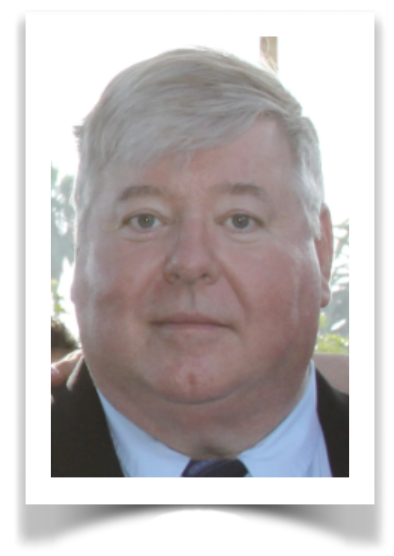Welcome to the new home of the Doctor Fortran blog! Given that I have been retired from Intel for more than three years, it seemed appropriate to give my posts their own home on my web site. With Intel’s permission, I have copied here the posts I wrote while I was an employee. (Apparently four of those posts had been deleted – I was able to recover one of them.)
MoreDoctor Fortran in “Larger Than Life”

I hate writing these, but as the years go on there will be more.
Stan Whitlock passed away yesterday (September 3, 2018) a mere six weeks after he was diagnosed with pancreatic cancer that had spread to his neck. He was 70 years old. Many of you may not know Stan’s name, but if you’re reading this blog Stan has undoubtedly touched your Fortran life. Stan joined Digital Equipment Corp. (DEC) in 1976, to work on the TOPS-10 (DECsystem-10) FORTRAN compiler. He had previously been a COBOL programmer for the Federal Reserve Bank of Boston. By the time I met Stan in 1979, he was leading the VAX APL project. Somewhere in the mid 1980s, he returned to Fortran, joining the DEC Fortran 90 project, and eventually he ended up being the project lead. In the Intel years he gained the title “Fortran Architect”, which meant that he helped explain Fortran to other teams at Intel what Fortran required and (re)designed directive syntax so that Fortran could use it.
MoreDoctor Fortran in “The End is Nigh”
At the June 2018 meeting of the International Fortran Standards Committee (WG5) in Berkeley, California, we processed 84 comments received during the ISO ballot of the Draft International Standard (DIS). Many of these comments were editorial in nature, some asked for clarification of technical issues and a couple involved small technical changes. There were enough edits, though, to require creation of a new document referred to as an FDIS (Final Draft International Standard). This will go out for a short ballot, and if all goes well the Fortran 2018 standard should be published by the end of the year. Fingers crossed!
MoreDoctor Fortran in “And They’re Off!”
Two significant events happened recently in the Fortran world. As I wrote in Doctor Fortran in “DIS, Dat and Doze”, the Draft International Standard for Fortran 2018 was submitted for country ballot back in January. There was an eight-week period for possible translations, though I don’t know that any occurred, and the ballot officially opened on March 9. Each ISO National Body (country standards committee) gets to vote and can Approve, Approve with Comments or Disapprove. The DIS is available for view at the new J3 web site, https://j3-fortran.org – go to Documents > By Year > 2018 > 18-007.
MoreDoctor Fortran in “DIS, Dat and Doze”
An important milestone in the birth of the new standard revision, Fortran 2018 (formerly Fortran 2015) is upon us! The Draft International Standard (DIS) has been submitted for country balloting. This is one of the final steps in the long process of developing a new standard, so we’re almost there!
MoreDoctor Fortran in “Eighteen is the New Fifteen”
When the international Fortran standards committee (WG5) met in 2012 to set a schedule for the next standard revision, the informal name of the standard was set to be “Fortran 2015”. The schedule changed over the subsequent years, but the name stayed the same. The current schedule has the standard being published in the second half of 2018, which caused a question to be asked: “Should we perhaps think of changing the year number to something more current?”
MoreDoctor Fortran in “Are We There Yet?”
The Fortran 2015 standard is almost here, for larger values of “almost”. The technical content is locked down and, at this point, only minor editorial changes are being allowed. A Committee Draft is currently out for ballot, with the results to be available in time for the next US committee (J3 or INCITS PL22.3) meeting in October 2017. International committee (WG5) members get to make comments and suggest editorial changes, but technical changes are not allowed.
MoreDoctor Fortran in “It Takes All KINDs”
So this is retirement? As I noted earlier, I may no longer be working for Intel, but I do intend to stay active in the Fortran and Intel development communities. While I am back in the forum answering questions, it is liberating knowing that I am not responsible for making sure every question (and bug report) gets answered. I recently learned a wonderfully appropriate Polish saying “Nie mój cyrk, nie moje małpy”, which translates literally to “Not my circus, not my monkey”, or more colloquially, “not my problem”. I plan to apply this a lot.
MoreDoctor Fortran in “To Be Continued”
This is my last blog post as an Intel employee (see Doctor Fortran in “Thirty-Eight”) but I intend to keep active in the Fortran (and Intel Developer Zone) community. First, though, I’ll take a short break.
MoreDoctor Fortran in “Thirty-Eight”
(Originally published October 2, 2016)
October 2, 1978 was a typical New England fall day. I walked into the entrance of what had once been a Caldor department store in Tewksbury, Massachusetts. This converted shopping center was the just-opened software development outpost of Digital Equipment Corporation, or DEC, and it was my first day of my new job there to be a developer on the VAX-11/VMS Run-Time Library. I announced myself to the security guard in the lobby and waited for my hiring manager to come out and escort me in. And waited. And waited. It turned out that they were waiting for another new hire who knew people there and had just walked in! Eventually I was rescued and brought inside.
More